Birding for a Better World
Birding as a feminist pursuit and sanctuary from a chaotic world
My wife, Wendy, and I went to Cape May, NJ, to celebrate her birthday earlier this month. Why Cape May, you might ask? Because it’s a world-renowned birding hotspot. Its location at the southern tip of New Jersey funnels migrating birds and Monarch butterflies into a small area before crossing the Delaware Bay.
Its mix of beaches, marshes, forests, and wetlands supports over 400 species year-round and many more during migration season. In addition, Monarch butterflies gather in Cape May on their extraordinary migration to Mexico. Combined with favorable coastal winds and many designated viewing sites, such as the Hawk Watch Platform at Cape May Point State Park, it offers unmatched opportunities to witness massive migrations.
Let me be clear, though, Wendy and I do not consider ourselves “birders.” We don’t maintain life lists or travel great distances to see a particular bird, and, quite frankly, neither of us is very good at identifying birds, by sight or by sound. However, we do gravitate toward birding events, are fascinated by the lives of birds, feed birds in our backyard, and participate in eBird, the Cornell backyard bird count. To most outside observers, we are birders. We’re just not very good at it. At least, I’m not.
I do love photographing birds, however. Sadly, I’m also not very good at that either, although I’m getting better, and I have gotten lucky a few times and captured some beauties, like this bluebird I captured through my study window a couple of years ago.
Unfortunately, the winds were not in our favor during our visit to Cape May. The weather was beautiful, 65-75 degrees, sunny skies, and calm winds. Birds and butterflies, we learned, are not too keen on making the 17-mile long flight from Cape May to Lewes, Delaware, without the wind at their backs. In fact, one of the naturalists we talked with said that the more experienced birds skip Cape May entirely, preferring land routes over the Appalachians to the more treacherous sea crossing. Make sense to me!
Still, according to BirdCast.info, 28.5 million birds have crossed at Cape May so far this autumn. From American Redstarts to Warblers, Indigo Buntings, and raptors of all kinds, birds are on the move.
October 8th, just a few days after we left Cape May, the Cornell Lab of Ornithology, using the US weather surveillance radar network between sunset to sunrise, reported the highest night of bird migration it had ever recorded: 1.25 billion birds had migrated across the Eastern and Central US! 1.25 BILLION birds in one night!
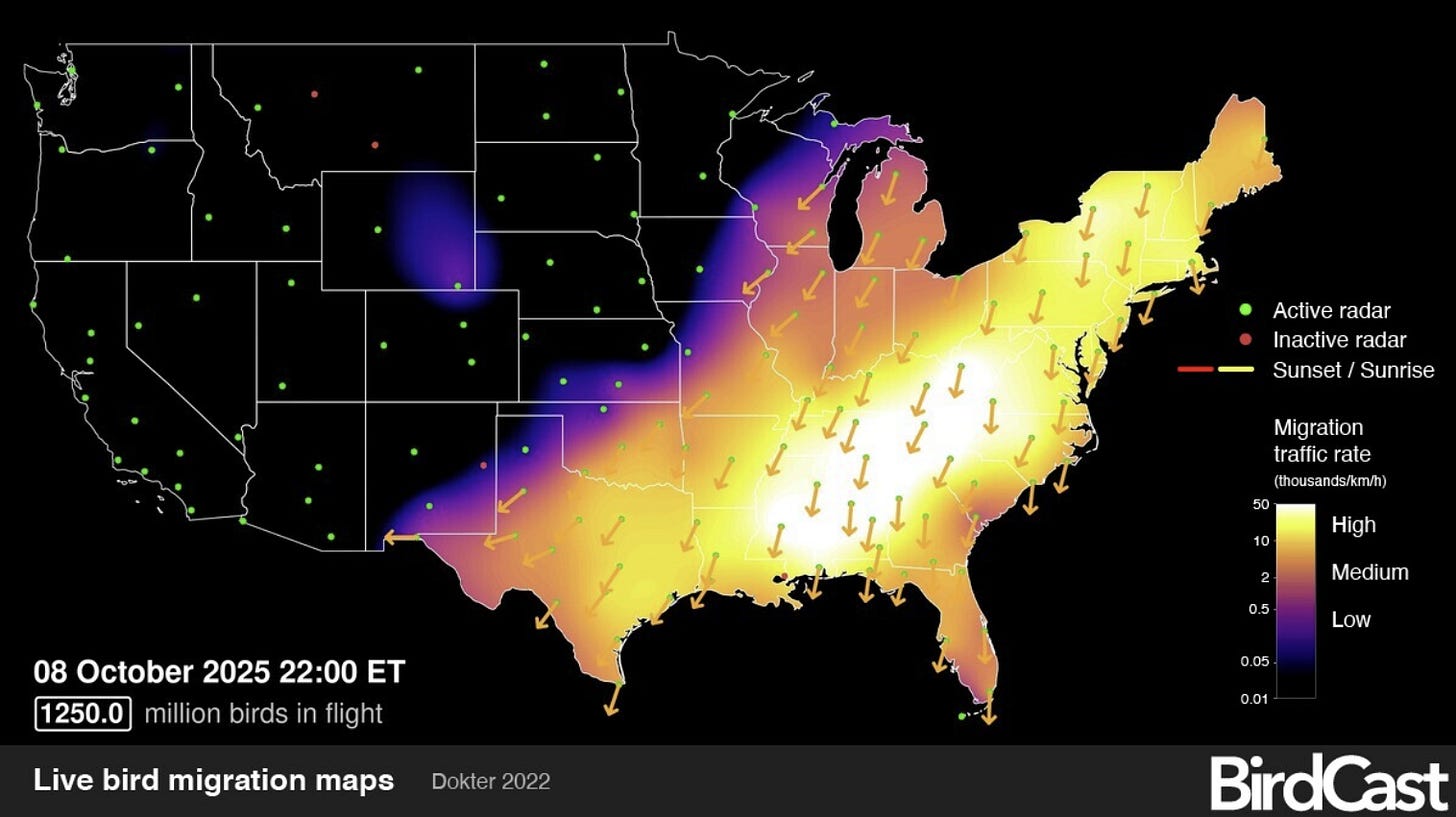
If you’re interested, you can enter your county and state in the Migration Dashboard on Birdcast.info to see how many birds are flying over your head tonight. Chances are you won’t see any of them in the sky. Most fly at night almost two miles above our heads.
Flying from 15 to 600 hundred miles per day, depending on the species and the conditions, they take advantage of colder air temperatures, which reduce the danger of overheating and allow birds to fly further without having to stop and cool down. And, dark skies tend to hold fewer predators, although today’s increasing light pollution seriously impacts migration patterns and safety.
Regardless of whether I see them, knowing they are there gives me hope for the world. Granted, bird populations have declined significantly in the last fifty years. According to a Cornell Chronicle report from 2019,
If you were alive in 1970, more than 1 in 4 birds in the U.S. and Canada have disappeared within your lifetime.
Habitat loss, destruction of native plant habitats, free-roaming cats, collisions with buildings and glass, pesticides reducing insect prey, power-line/tower/wind-turbine impacts, and other causes seriously impact bird populations.
And, still, birds haven’t given up. They still mate, reproduce, and go on about their lives no matter what we throw at them. They are intrepid (mostly) little creatures.
Here are a few actions we can take that will help protect birds in our neighborhoods:
Keep cats indoors.
Grow native plants.
Avoid pesticides and herbicides.
Apply decals, patterns, or screens to large windows.
Turn off night-time lights during migration seasons.
Reduce plastic use and pollution.
Participate in citizen science projects like eBird or Project FeederWatch.
Support bird conservation organizations.
Advocate for habitat protection and environmental policies.
For more about steps you can take to mitigate bird loss, read more about the study and ways we all can help Bring Birds Back.
Birding for a Better World
While in Cape May, we visited Barrier Island Books & Art, a funky new and used bookstore right across the street from Dockside Dave’s Seafood Market, where Wendy devoured her birthday lobster roll and I joined in with a delicious crab roll. Not surprisingly, the bookstore had a lot of books about birding. However, Wendy was surprised to see one written by one of her work colleagues, Peter Cashwell, The Verb To Bird.
Two other bird books caught my attention, The Feminist Book Club’s Birding for a Better World: A Guide to Finding Joy and Community in Nature by Molly Adams and Sydney Golden Anderson and Birding to Change the World: A Memoir by Trish O’Kane. I had to buy them both!
In this tumultuous, destructive, unethical, violent time, I need birds. I need birds for solace, for humor, for beauty, and for inspiration. Learning that others had used their love of birds to augment and support their commitments to social justice gave me all the permission I needed to embrace my identity as a birder.
Adams formed the Feminist Bird Club in 2016 in order to:
Make birding and the outdoors inclusive and affirming to people who may not have safe access to it, and leverage people’s passion for the environment and social justice to help create lasting social change.
In Birding for a Better World, Adams and Anderson close each chapter with a writing prompt to help readers think more deeply about their experiences with nature and how they are formed by these experiences. For example, readers are encouraged to reflect on the following:
What terms or concepts are important to you when you envision worlds more just, livable, connected, and joyful? Define them here. We’d love to learn how you define better futures for everyone.
Page 28
And this one:
Locate yourself within the complex network of life. Where are you? Who came before you? Who are your teachers (human and nonhuman)?
Page 124
In a few short years, Feminist Bird Clubs have sprung up in cities across North America and in the United Kingdom, including one in my town of Richmond, Virginia. I’m excited to go birding with a diverse group of socially conscience people from my community. I’ll let you know how it goes.
You can find out if there’s a chapter near you at this link: https://www.feministbirdclub.org/chapters-and-sibling-clubs. If you don’t find one, I’m sure they’ll help you form your own.
In Birding to Change the World: A Memoir, author O’Kane shares how birds who showed up after their home was destroyed by Hurricane Katrina gave her hope and inspired her to become a passionate birder, community organizer, and environmental educator. I haven’t finished this one yet but I’m enjoying it so far.
We all have a lot to learn from these beautiful, flighty creatures. I hope you’ll join me in appreciating all that birds have to offer us.
One more tip, if you don’t know about the app, Merlin Bird ID, I strongly encourage you to install it on your phone. In addition to offering a ton of info about birds and how to identify them, you can turn on the recorder and let it tell you what birds are singing in your backyard, in your local park, or while traveling to far away places. It’s an incredible free tool (although if you can, it’s great if you can donate to the Cornell Lab. They do an awesome job!) that will amaze and delight you. At least it does me!
Bird photos I love
I didn’t have much success photographing birds in Cape May. So, with the exception of this first one, I’ll share a few of my favorite bird photos with you from our trip to Alaska earlier this year.
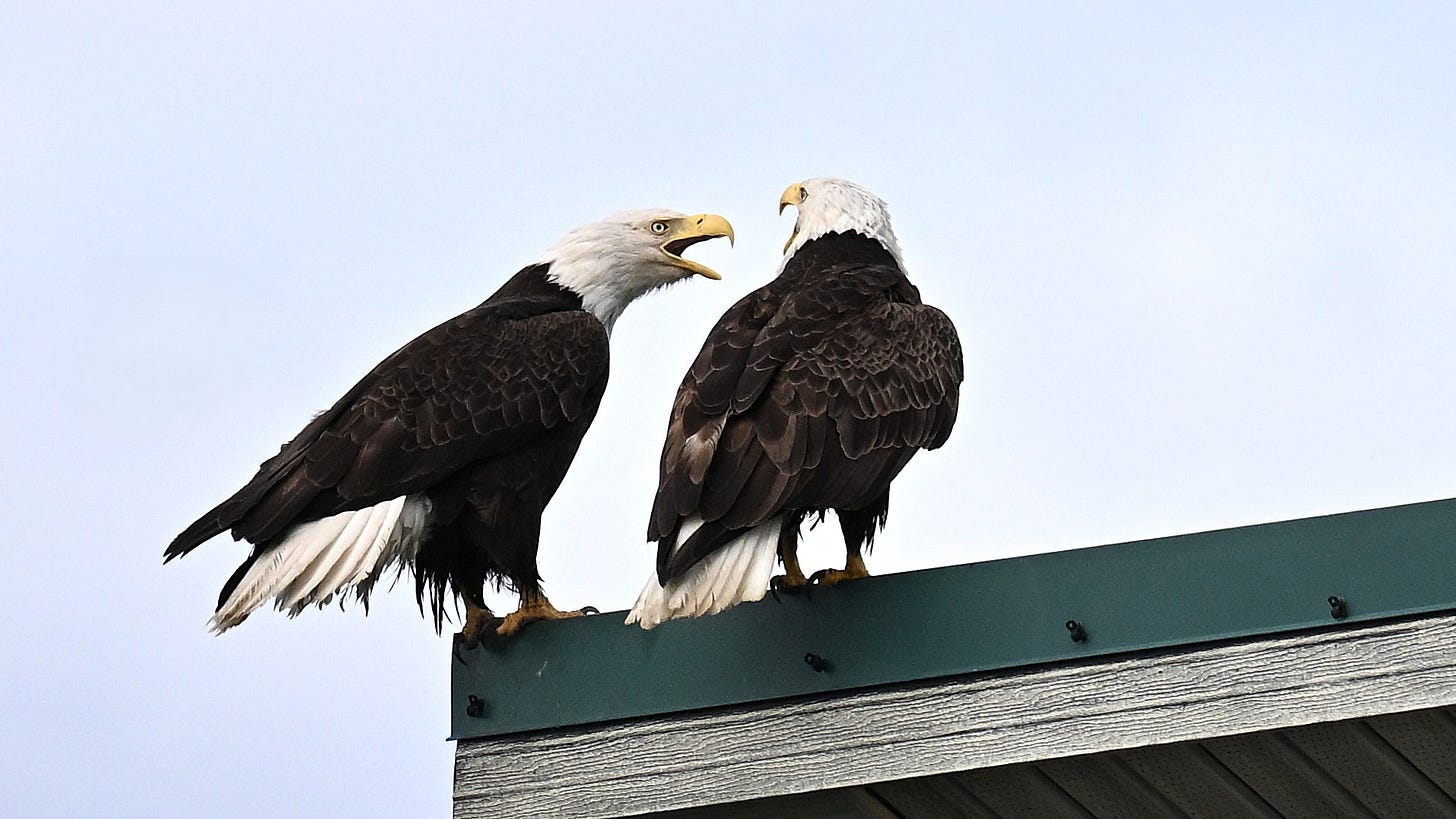
I hope you take the time to enjoy the birds in your community. They have a lot to teach us, while at the same time, bringing relief from stress and occupation with the state of the world.
Happy birding!



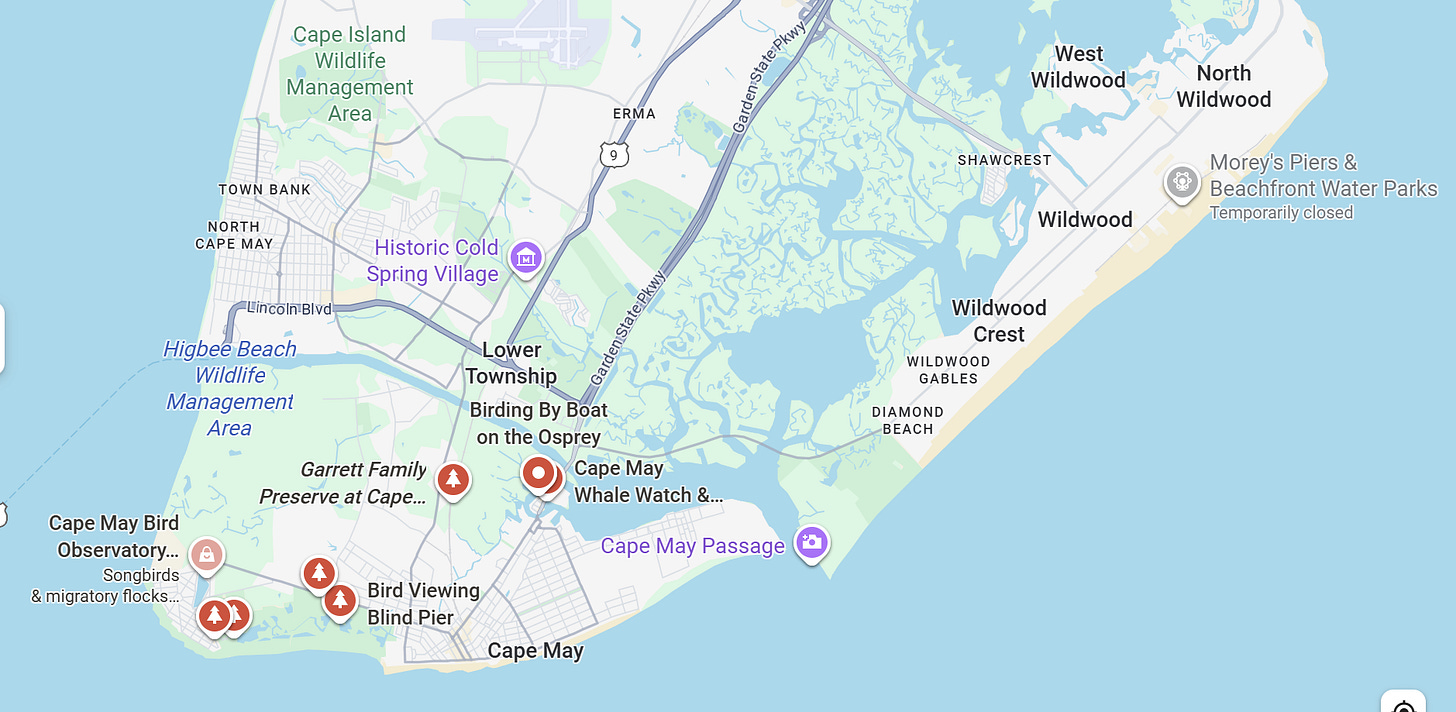
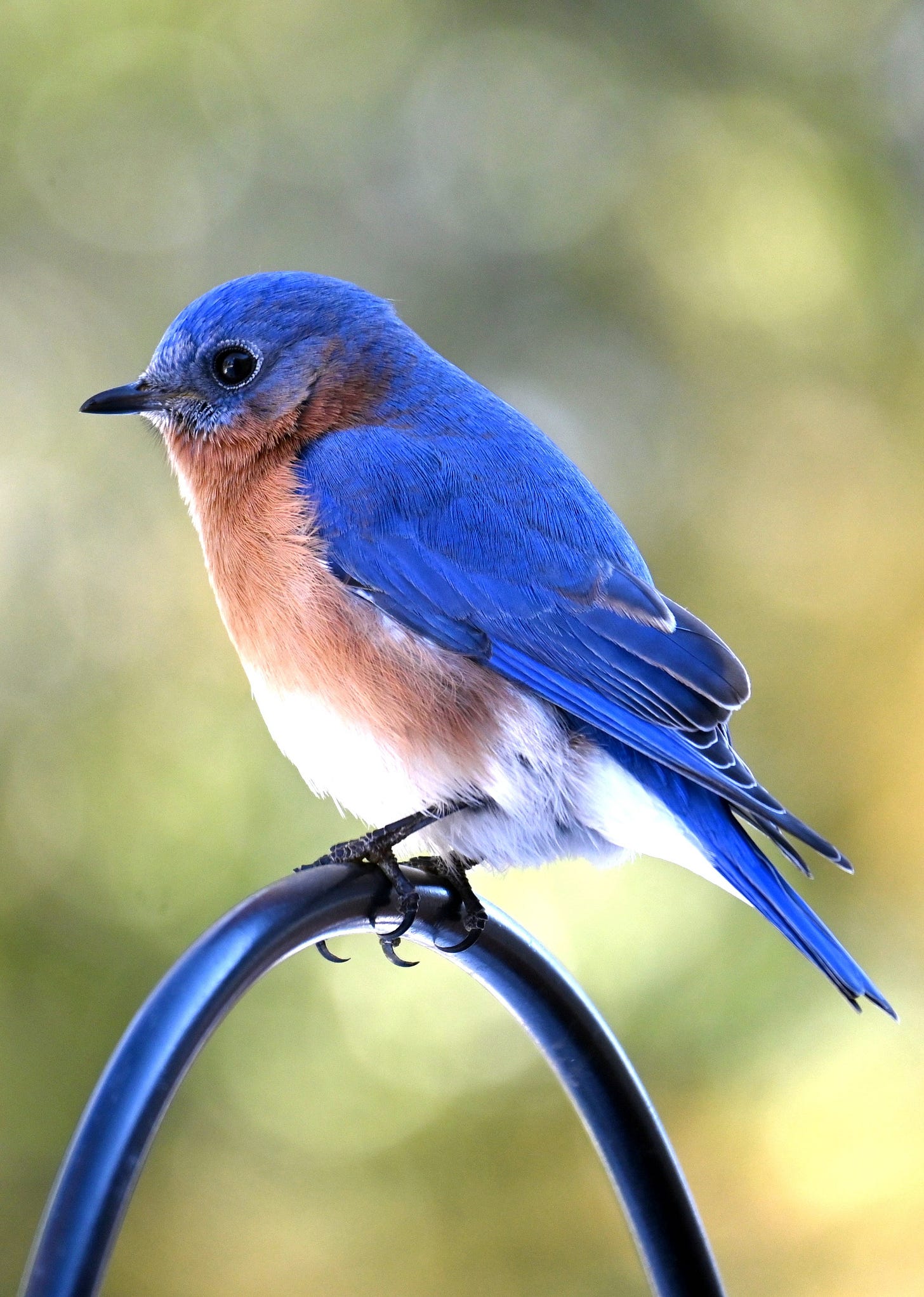
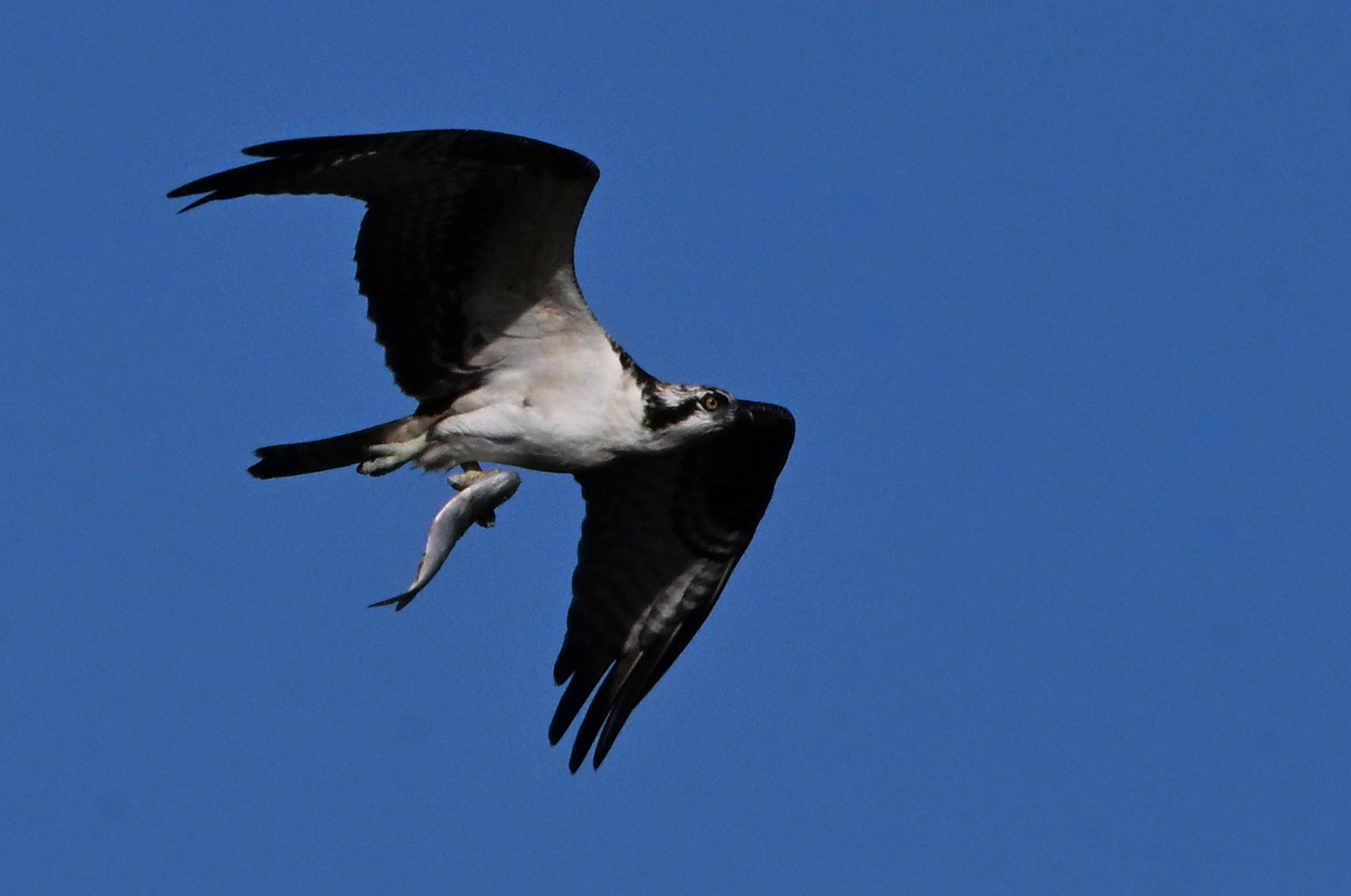
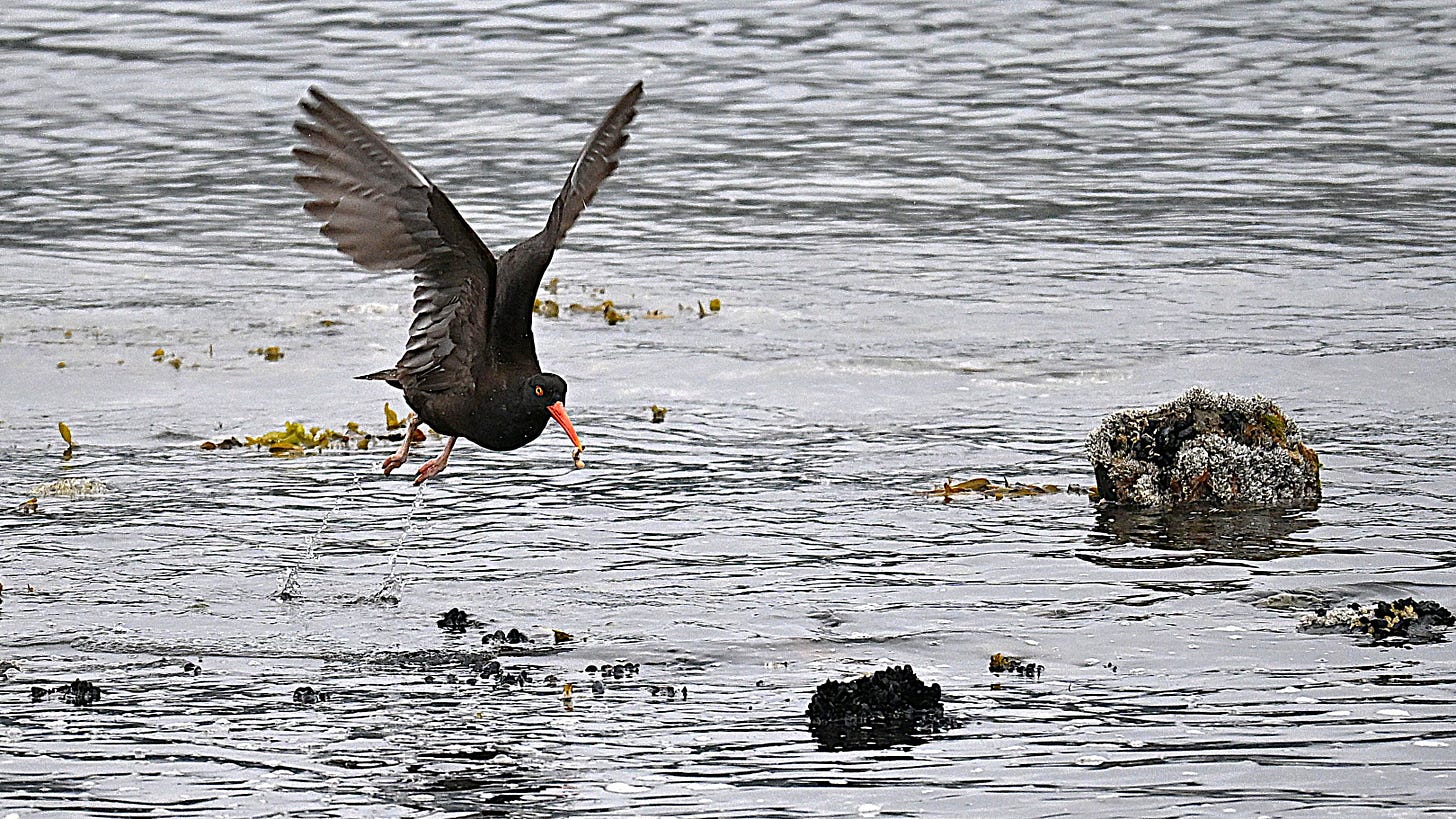
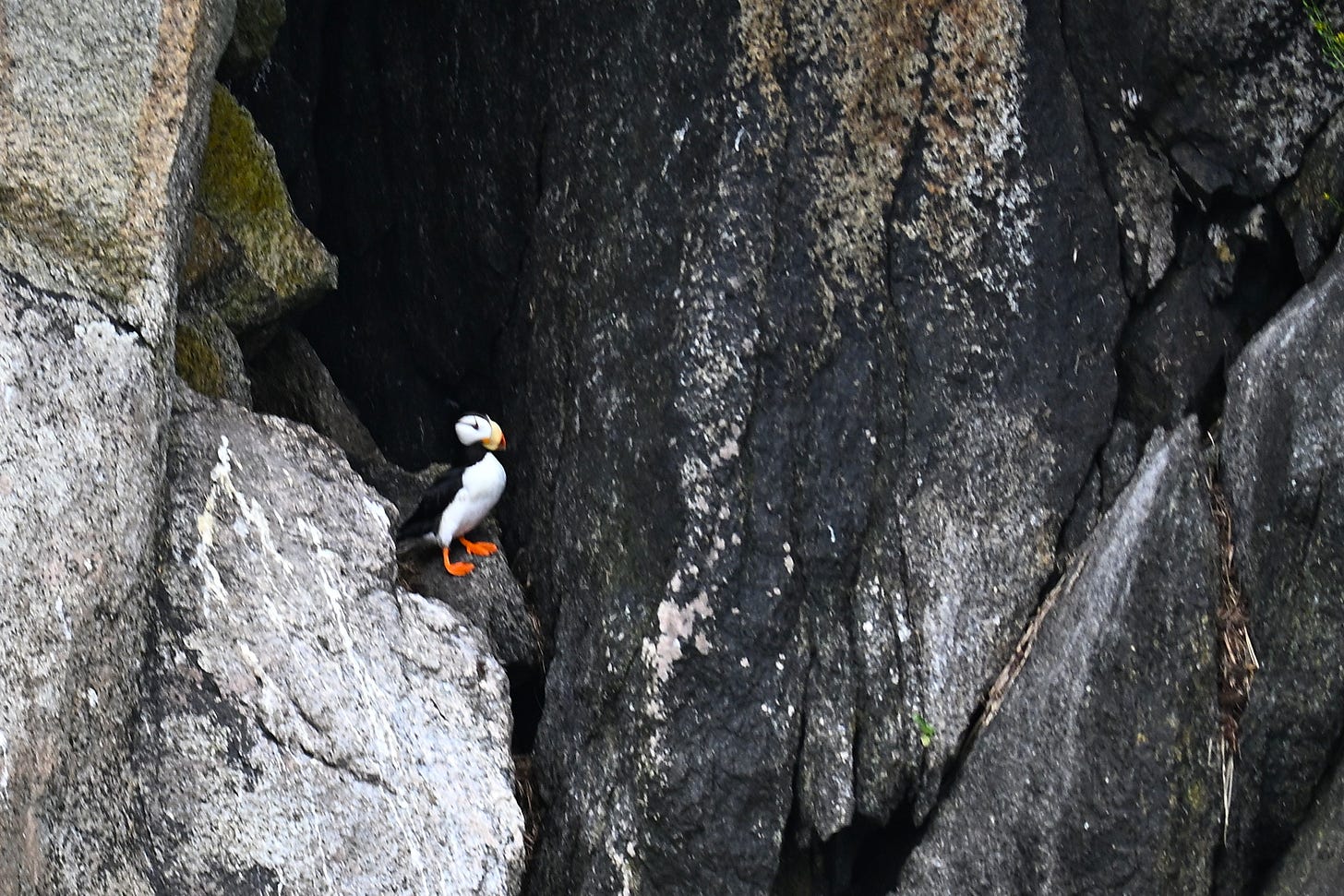
I dearly love Cape May! Gil and I vacationed there and I took Jake, my grandson, there on what I thought might be that last trip he would acquiesce to with his GG since he was 12 and a middle schooler. The Cape May ferry was a white knuckler on the trip back.
I remember thinking that I wanted to know more about the birds that we were seeing in the back yard when Covid hit - I got that app and lovely bird books which were a gift when it came to keeping your chin up during that period.
This prompted some nice memories, Annette. Thank you for sharing!
Loved this one, and couldn't agree more about the hope that birds give us in this troubled times. Long live the winged ones. AMO